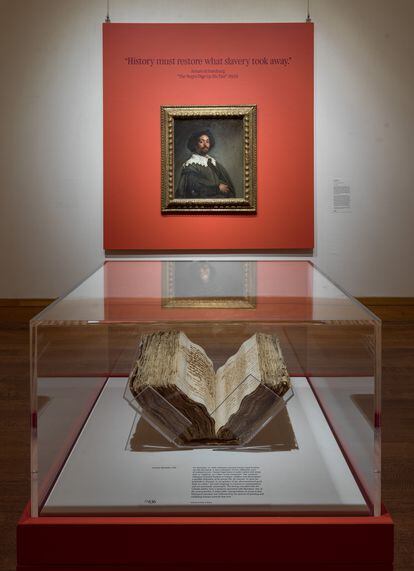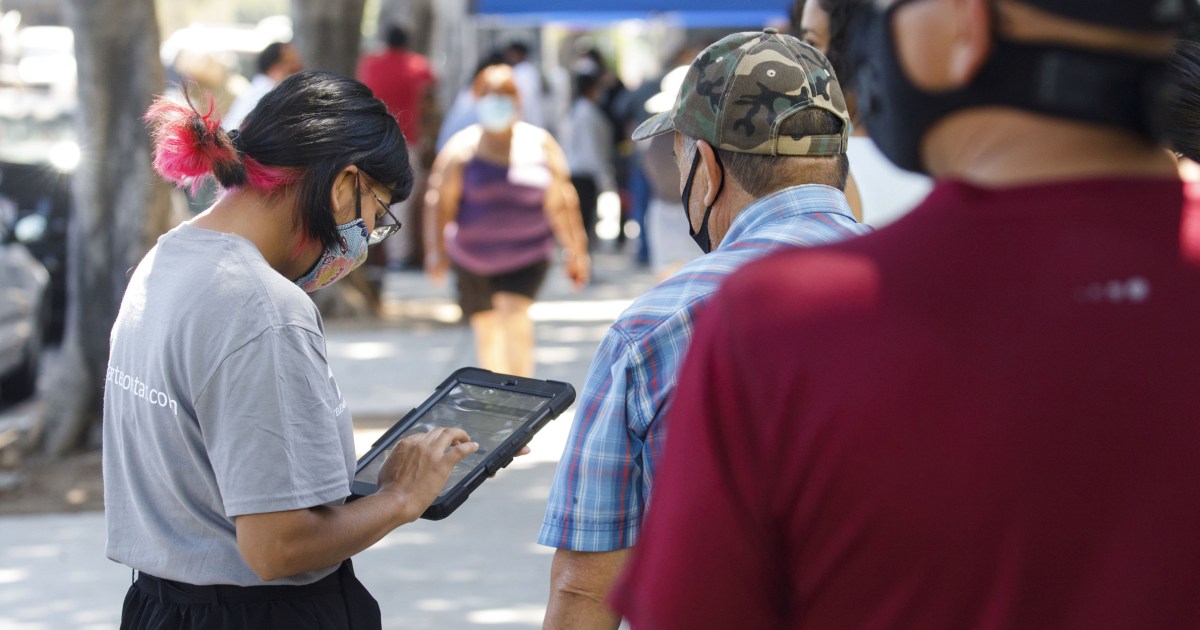The trip to New York that Juan de Pareja (ca 1608–1670) undertook in 1971, when the Metropolitan Museum (Met) acquired his portrait painted by Velázquez, now culminates with the first monographic exhibition that the art gallery dedicates to the man who was a slave and apprentice of the teacher.
The first known Afro-Hispanic painter was a servant for more than two decades, and the exhibition that opened this Monday is the first dedicated to glossing over his career and the little-known framework of the multiracial Spain of the Golden Age in which lived.
A panorama far removed from the
official
monochrome vision , supposedly the result of ethnic cleansing carried out by the Catholic Monarchs two centuries earlier.
The exhibition brings together 40 objects, including paintings, sculptures and decorative arts objects with mestizo models and motifs, as well as a set of books and documents, the most important of which is the manumission of Pareja by its owner in 1650, which is preserved in the Archivio di Stato in Rome.
Juan de Pareja, Afro-Hispanic painter
, which can be seen until July 16, is also a lesson on the important presence of blacks, mestizos and Moors in the painting of the time —that is, in contemporary society—, as various works attest by Zurbarán, Murillo and the three versions that Velázquez himself made of a young racialized cook, scattered around the world and brought together for the first time in the exhibition.
One of the titles by which they are known in Spain,
La mulata
, helps illuminate that quiet presence.
Portrait of Juan de Pareja painted by Velázquez in 1650. It was acquired by the Met in 1971. Anna - Marie Kellen
The jewel of the exhibition are the two paintings signed by Pareja, in one of which,
The Vocation of San Mateo
, he appears self-portraited with the same proud, affirmative presence that he shows in the painting that Velázquez dedicated to him in 1650. The other is
The baptism of Christ
.
“Both are from the Prado Museum and are the main ones [in the show].
Each one is about three meters wide, and it is not easy to move such large canvases.
[El Prado] did a wonderful job of conserving so that these two works could travel to us”, explains David Pullins, head of European painting at the Met and one of the curators of the exhibition.
The self-portrait of the artist in
La vocation de San Mateo
it supposes “a direct thread with which Velázquez painted, one of the masterpieces of the Met”, according to Pullins.
Firm, frank, defiant even, the painter captures the gaze with more determination than his master as a court painter on one flank of
Las Meninas
.
In
The Baptism of Christ
, Pareja's signature is clearly visible in the lower left corner of the canvas.
The traces of that signature contain the vital journey of Pareja, born in Antequera around 1606-1608, probably the son of an African slave and a white Spaniard.
Despite the scarcity of data, the archives provide evidence that 17th-century Spain was a multiracial society and that artists and artisans used to hire slaves to work in their workshops, in crafts or domestic trades.
But Velázquez and Pareja, or vice versa, went a step further in their relationship —that of a consecrated artist with a young apprentice, assistant, emulator and ultimately continuator of the master— when the former took the young man with him to Italy, on a trip which lasted from 1649 to 1651.
The portrait of Pareja, which was exhibited in the Roman Pantheon in March 1650, occupies the main room of the New York exhibition, just opposite the one Velázquez made of Pope Innocent X (an imposing painting that Francis Bacon seems to be looking at, who versioned it more than three centuries later).
In Rome, the Spanish master wanted to impress his Italian colleagues with his talent, and, according to his biographer Antonio Palomino, "he placed this portrait [of Juan de Pareja] with such universal applause on said site that, by the vote of all the painters of different nations, everything else looked like paint, but this one was just true.”
In addition to capturing the appearance of Pareja, Velázquez also managed to show his proud character, a special presence, almost a gentleman, in someone he had lived under.
View of the exhibition on Juan de Pareja at the Met;
In the foreground, his painting 'The Vocation of Saint Matthew'. Anna-Marie Kellen
The task of the visionary Schomburg
Pareja dedicated himself to painting after obtaining his freedom, in 1654;
It was from then on that he developed an autonomous, independent career.
The dimension of the two paintings reviewed shows his ambition with his brushes, a sign of courage rather than confidence.
Pullins maintains that his career was much better known in the 19th century than it is now.
“I think his story, and a lot of information about him, was well known in the 19th century.
In fact, I often say that he was probably better known in the 19th century than he is today, ”he points out.
Regarding the scope of the exhibition, discreet in number of pieces and calendar, the curator affirms that it is pioneering in many ways.
“It is the first monographic exhibition, but also the first to address the work of enslaved artisans, in a multiracial society like that of the 17th century in Spain.
Sheds light on Pareja, but also on the Spanish Golden Age.
At some point in the 17th century there were more than two works by Pareja hanging in the same room, it was that important”.
The one at the Metropolitan is an exhibition in a
woke key
, that is, a critical rereading of race —and classes—, but also a tribute to the African-American who contributed the most to recovering the story of Pareja del olvido.
Arturo Schomburg, a self-taught American scholar born in Puerto Rico, spent much of his fortune traveling through Europe, with Spain as his main stop, to rehabilitate what he called the "black diaspora."
Schomburg was a leading figure in the so-called Harlem Renaissance, a cultural and protest movement that at the beginning of the last century valued the contribution of the African-American population to society.
The room dedicated to Schomburg's trips through Spain, from which he returned with the full figure of Pareja, opens the exhibition with curious photographs, already in sepia, of the Giralda.



/cloudfront-eu-central-1.images.arcpublishing.com/prisa/LCEWDT3BEBCZFJIXDQLL5KFF5Y.jpg)
/cloudfront-eu-central-1.images.arcpublishing.com/prisa/6LR4RYAGZZBYTPDW3Y4WG67SQI.jpg)




/cloudfront-eu-central-1.images.arcpublishing.com/prisa/HCD4VSRM6VHKTEK6OQ5QZXVVO4.jpg)